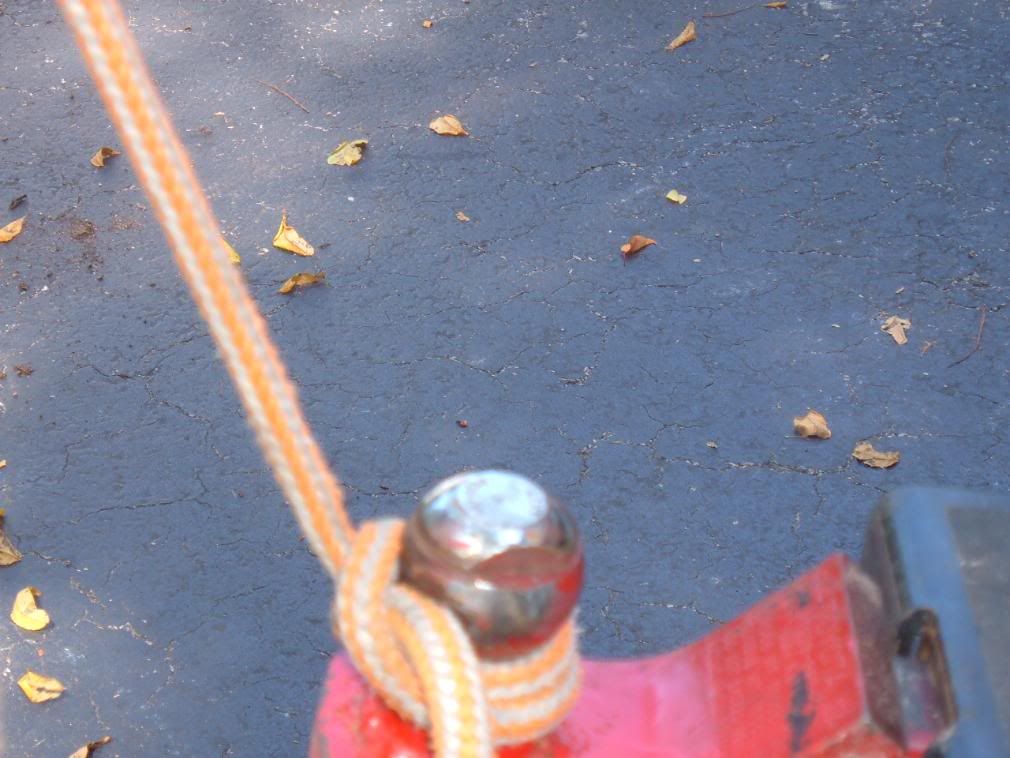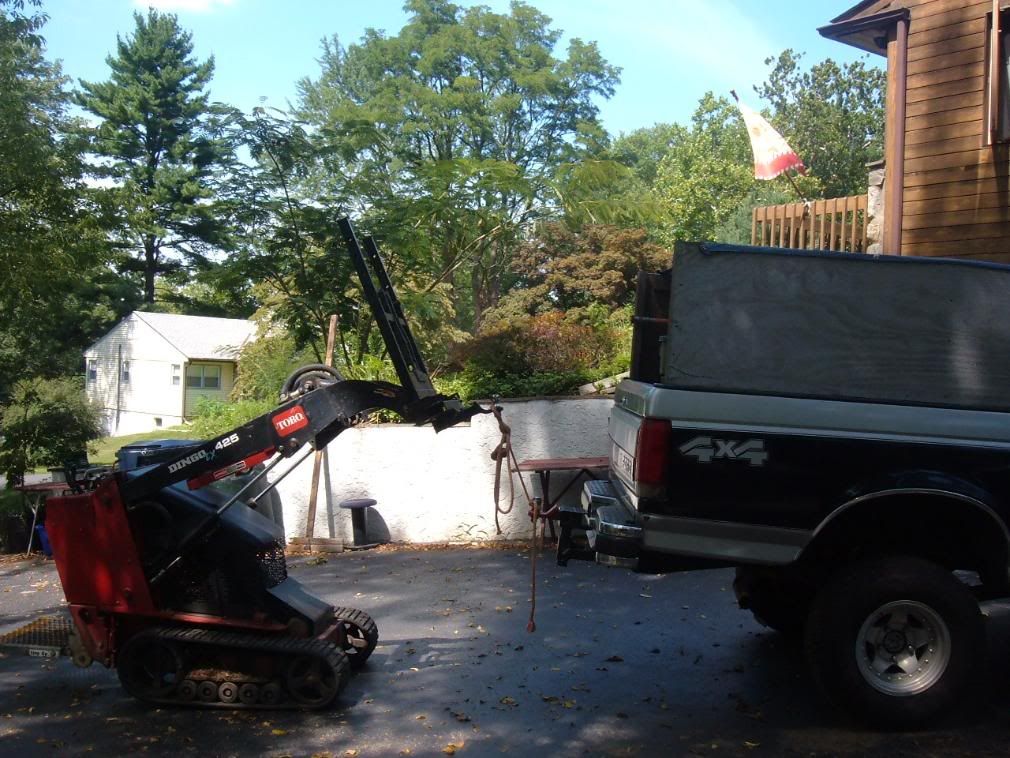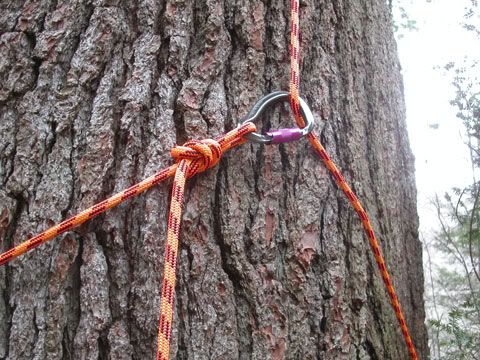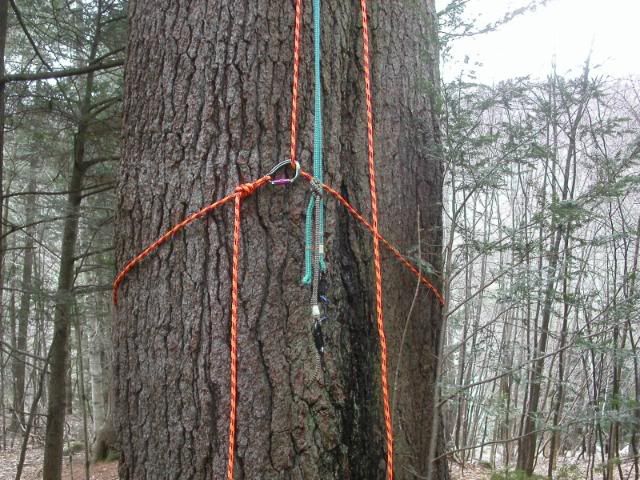Pinch off at collar around Standing, and undo the 'loose splice' of the Timber, that is behind the 'Muenter' around the tree. Even easier if you make kinda a slipped Timber, and use a bight for the 'loose splice', then dog the Bitter End thru the Bight's mid point etc.
This 'Muenter' effect / stage of the Timber can also be found in a Slipped Cow, the slip, then locked off... Also in reverse (Muenter to Timber, instead of Timber to Muenter etc.), can be used for tightening / some lifting, by pulling Standing into tree as tight as possible, then, 'Muenter over/around' Standing; then use this Muenter to bend/ leverage the Standing, and pull the purchase thru to Bitter side. Then, slide arraingemeant back around away from you (around tree), and pull again to bend Standing. As the Standing tightens, thereby resisting bending more, therefore higher leveraged return each time you do this process. Then, finish with Timber, Cow, another Turn + 2 Halfs etc.
Hope that isn't tooo thick, but anyway; i see this adjust-able Muenter configuration at base of Cow, Timber (whose finishes are the 'soft lock', then 2 Half Hitches as a 'hard lock' to that).





























































 Looks well established.
Looks well established.